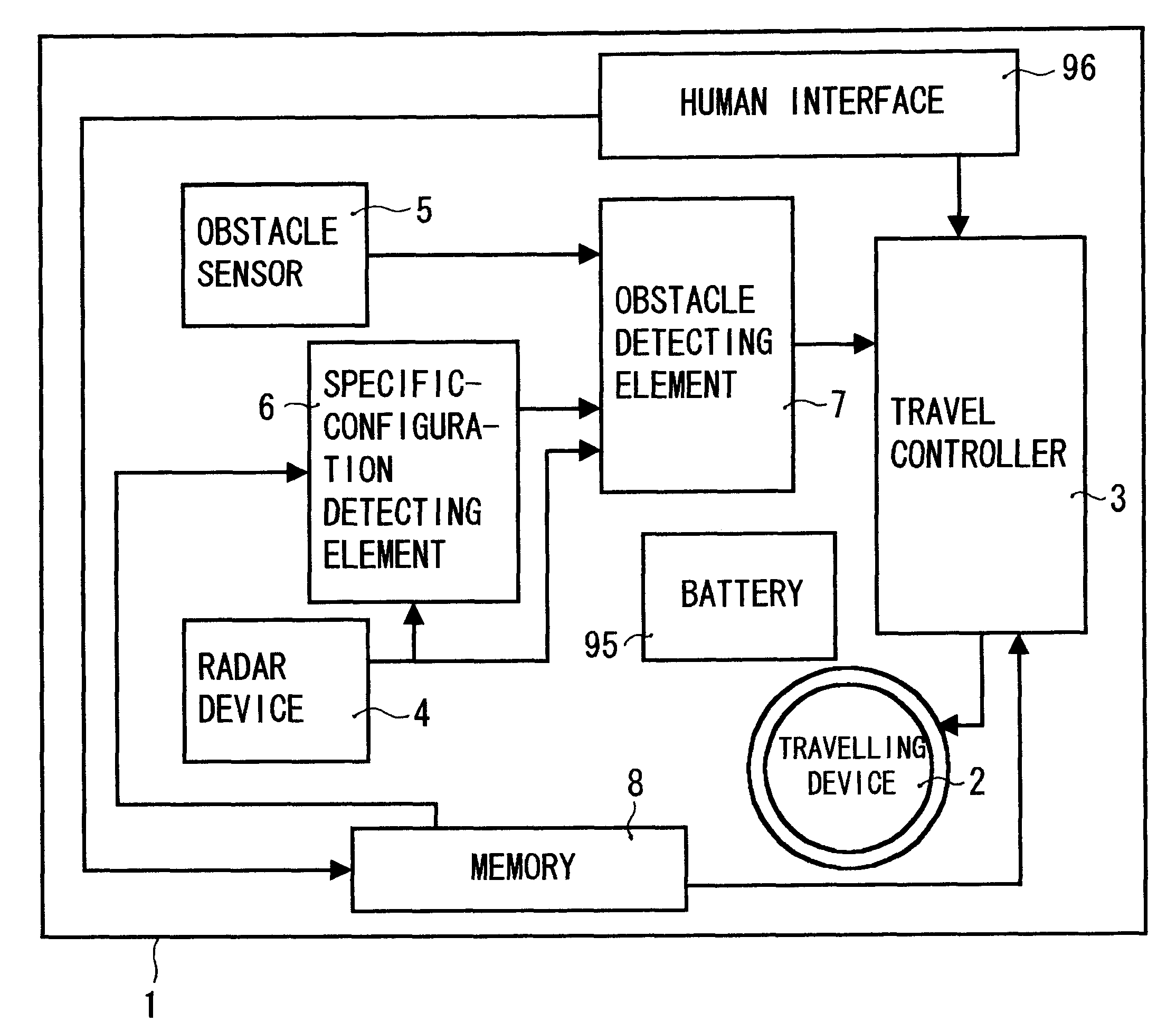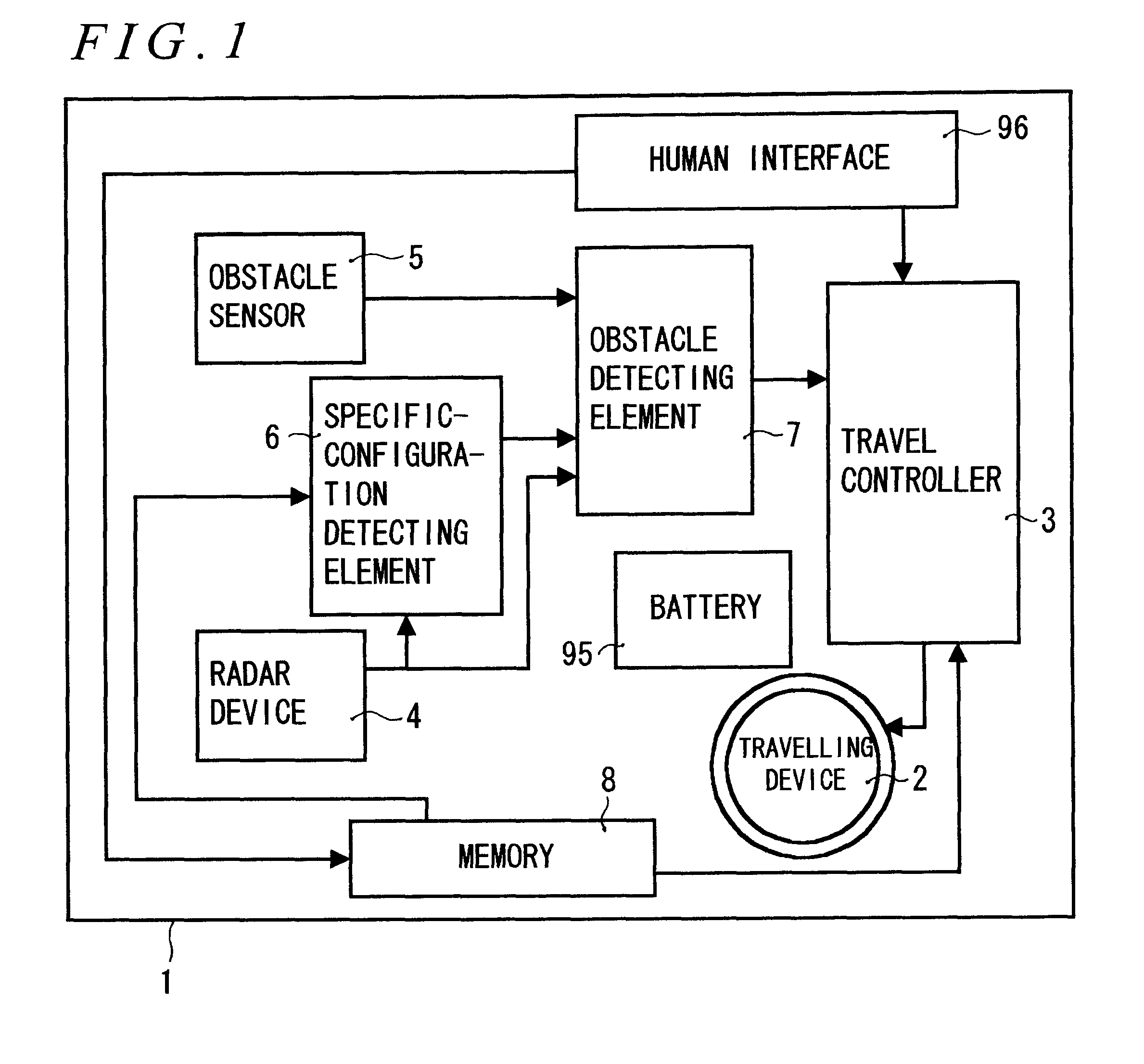Autonomous moving apparatus having obstacle avoidance function
a technology of autonomous moving and obstacle avoidance, which is applied in the direction of vehicle position/course/altitude control, using reradiation, instruments, etc., can solve the problems of increasing costs, unable to efficiently avoid obstacles both in direction and distance, and cannot clearly be recognized, so as to reduce power dissipation and facilitate avoiding obstacles efficiently
- Summary
- Abstract
- Description
- Claims
- Application Information
AI Technical Summary
Benefits of technology
Problems solved by technology
Method used
Image
Examples
Embodiment Construction
The following will describe one example of an embodiment of the invention. FIG. 1 is a block diagram for showing an autonomous moving apparatus 1 of the invention. The autonomous moving apparatus 1 includes a travelling device 2 capable of travelling and steering, a travel controller 3 for controlling the travelling device 2, a scan-type sensor (hereinafter called radar device) 4 comprised of a radar etc. for scanning a horizontal plane in a travelling direction of the travelling device 2 to thereby detect an obstacle, a non-scan-type sensor (hereinafter called obstacle sensor) 5 comprised of a supersonic or infrared sensor for detecting an obstacle in a space different from the scanning plane of the radar device 4, a specific-configuration detecting element 6, an obstacle detecting element 7, and a memory 8.
The specific-configuration detecting element 6 serves to detect a set specific configuration based on information obtained from the radar device 4 which scans a scanning plane. ...
PUM
 Login to View More
Login to View More Abstract
Description
Claims
Application Information
 Login to View More
Login to View More - R&D
- Intellectual Property
- Life Sciences
- Materials
- Tech Scout
- Unparalleled Data Quality
- Higher Quality Content
- 60% Fewer Hallucinations
Browse by: Latest US Patents, China's latest patents, Technical Efficacy Thesaurus, Application Domain, Technology Topic, Popular Technical Reports.
© 2025 PatSnap. All rights reserved.Legal|Privacy policy|Modern Slavery Act Transparency Statement|Sitemap|About US| Contact US: help@patsnap.com



